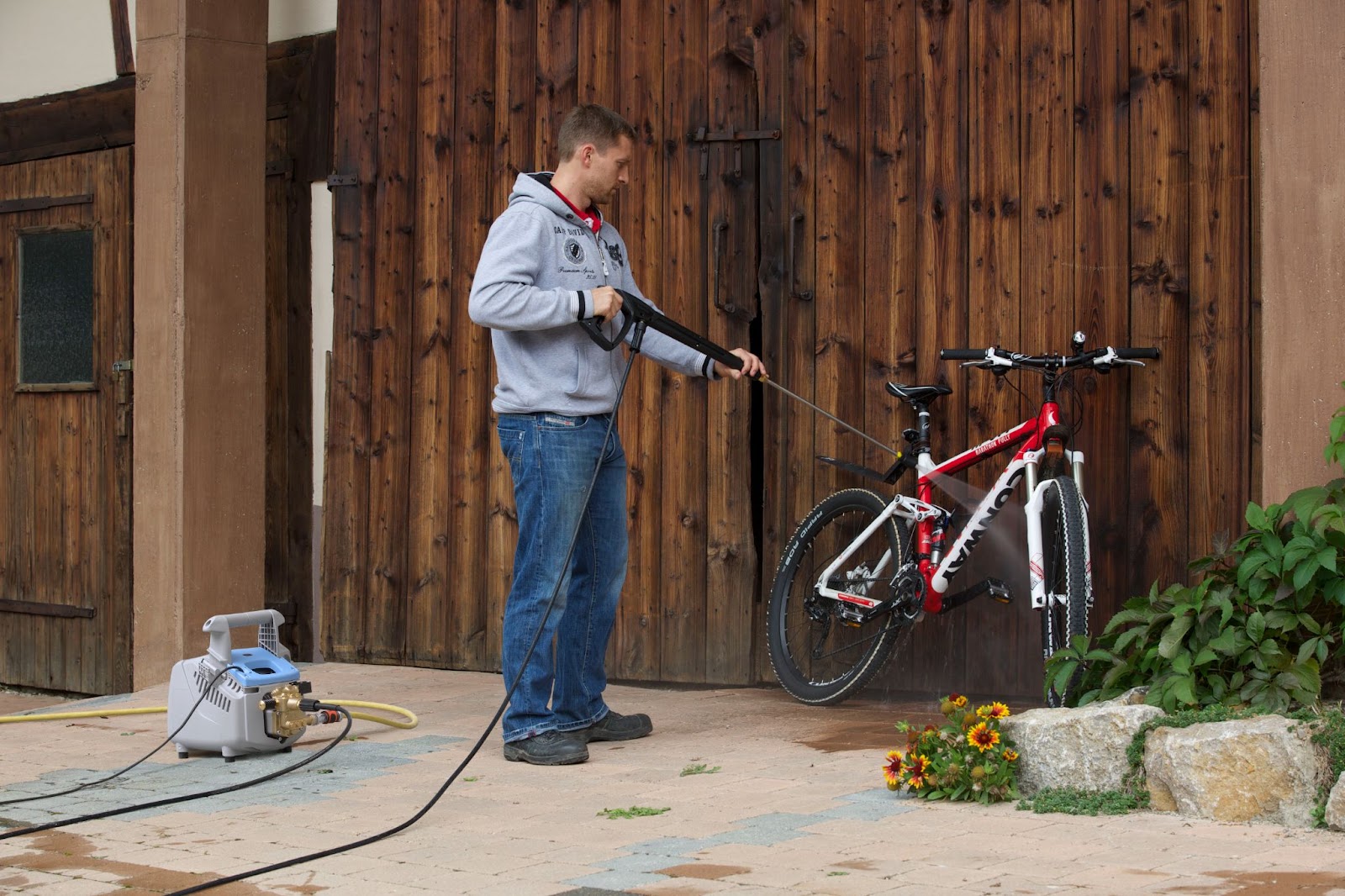Introduction
When it comes to pressure washers, many people assume that higher pressure automatically means better cleaning, but that’s far from the truth.
In reality, not all pressure washers are built the same, and choosing the wrong one (depending on your specific needs) can lead to wasted water, inefficient cleaning, or even damage to delicate surfaces like car paint.
This guide breaks down everything you need to know before buying a pressure washer, including the key factors that influence performance and our top recommendations for different users.
Why Choosing the Right Pressure Washer Matters
Picking the wrong pressure washer can lead to subpar cleaning results, wasted time, and even accidental damage. Here’s why choosing the right one is crucial:
Pressure
- Too much pressure can ruin your car’s paint: A pressure washer with too high of a PSI (pounds per square inch) can strip wax and even damage coatings and paint. 950-1400 PSI at the nozzle is the safe range for car detailing. Understanding the right PSI is crucial for a safe and proper clean.
- Low pressure may not clean effectively: If a pressure washer doesn’t have enough power, you’ll find yourself scrubbing by hand to remove dirt and grime, defeating the purpose of using one in the first place.
Flow Rate (LPM)
- Flow rate (LPM) is just as important as PSI: Many people focus on pressure but overlook LPM (litres per minute). A higher LPM moves more water, helping to rinse dirt away efficiently. By selecting the right flow rate, you can achieve faster, more effective cleaning every time.
Fittings
- The wrong fittings can limit your options: Not all pressure washers are compatible with foam cannons, quick-connect lances, and detailing accessories. Choosing one with universal fittings (M22 & ¼” quick connect) ensures maximum flexibility.
Form
- Storage and ease of use matter: If you’re a home user, a compact, lightweight pressure washer is much easier to handle than a bulky, industrial-sized unit. On the other hand, for commercial use, durability and power take priority.
Duty Of Cycle of Motor
- Duty cycle of motor/pump assembly affects longevity: Depending on how frequently you use your pressure washer, the motor and pump size play a big role in durability. Occasional users can opt for smaller, more portable units, while professionals who use them daily should invest in a washer with a high-duty cycle motor and robust pump assembly to prevent premature wear and overheating.
By understanding these factors, you can choose the perfect pressure washer for your needs—whether you’re a casual weekend washer or a detailing enthusiast looking for professional results.
Our Top Picks for Pressure Washers in 2025
| Model | Best For | Key Features | Why We Love It |
| Active 2.0 | Car detailing, beginners | Compact yet powerful, lightweight design, high performance | Affordable, efficient, and easy to handle |
| Kranzle K1152TST | Professional use, high-performance detailing | Durable build, superior pressure control, built-in hose reel and wheels for mobility | Perfect for those seeking top-tier reliability and power |
| AR Annovi Reverberi 680 | Stationary setups, prosumers | Wall-mounted solution, robust build, designed for long-term use | Great for professional setups needing a fixed high-performance washer |
Accessories to Consider
- Hoses: Durable, kink-resistant options to maximize efficiency.
- Short Guns: Improved maneuverability for detailing hard-to-reach spots.
- Lances: Essential for targeting specific areas with precision.
- Nozzles: Variety of spray angles for tailored cleaning tasks.
How to Build Your Perfect Pressure Washing Kit
Step 1: Assess Your Needs
Before investing in a pressure washer, ask yourself:
- How often will I use it?
- Will I be using it for just vehicle cleaning, or also for patios, driveways, and other surfaces?
- What level of pressure output do I need for my specific cleaning tasks?
- Do I need a compact and portable model, or is a stationary unit more suitable?
Step 2: Choose Your Base
Selecting a washer that matches your needs requires considering factors like flow rate, pressure, and portability. Use the table below as a guide:
| Factor | Why It Matters | Recommended Range |
| Flow Rate (LPM) | Determines how fast water moves through the washer, affecting cleaning power. | 6-10 LPM for cars, 10+ LPM for heavy-duty cleaning |
| Pressure (PSI) | Too high can damage car paint; too low may not clean effectively. | 950-1400 PSI for car detailing, 1900+ PSI for outdoor surfaces |
| Portability | Consider weight, hose length, and maneuverability. | Compact & lightweight for home use, wheeled units for professionals |
Step 3: Add Your Accessories
To maximize the performance of your pressure washer, consider these accessories:
- Hoses: Ensure you have the right length and durability to reach all areas efficiently.
- Nozzles: Adjustable nozzles help regulate pressure output based on the task.
- Foam Cannons: Great for pre-wash applications, especially in car detailing.
- Quick Connect Fittings: Make setup and breakdown more convenient.
Ask yourself:
- What additional tools will enhance my washing experience?
- Do I need specialized attachments for better control and efficiency?
Tips for Maintaining Your Pressure Washer
To ensure longevity and consistent performance, follow these maintenance tips:
- Clean filters regularly to prevent clogs and maintain steady water flow.
- Store in a cool, dry place to avoid hose and seal deterioration.
- Inspect and replace worn parts periodically to prevent unexpected breakdowns.
- Listen for changes in sound—an unusual noise can indicate an issue that needs attention.
- Ensure adequate power supply—avoid using extension cords for high-amperage units.
- Prime the pressure washer before use to prevent pump cavitation.
- Check accessory compatibility—ensure hoses and nozzles do not create pressure drops or bottlenecks.
- Install a strainer or filter upstream between the garden hose and pressure washer inlet to prevent debris from entering the pump.
- Properly seal fittings—avoid overtightening, which can damage o-rings.
- Change gear oil as per OEM recommendations to maintain internal components.
Following these steps will keep your pressure washer in top condition, ensuring effective and hassle-free cleaning for years to come.
Conclusion
Choosing the right pressure washer isn’t just about picking the highest PSI, it’s about selecting the best fit for your cleaning needs. Whether you’re a weekend car detailer, or a professional in need of heavy-duty performance, the right washer can make all the difference.
By understanding the key factors such as flow rate, pressure, and portability, as well as investing in the right accessories, you can maximize efficiency while ensuring safe and effective cleaning. Pair that with proper maintenance, and your pressure washer will deliver optimal performance for years to come.
Ready to upgrade your pressure washing setup?
Explore our top-rated pressure washers and learn more about choosing the best one for your needs so you can get started today!
-

Calvin brings a wealth of experience across multiple engineering disciplines, including chemical, mechanical, and electrical engineering. His in-depth knowledge of filtration systems and hydraulic pumps has positioned him as an expert in the pressure washer product category. With a unique combination of technical expertise and business insight, Calvin excels at solving complex challenges and driving innovation, particularly in the car detailing industry.
-

Aaron is a passionate car detailing enthusiast who channels his expertise and love for pristine vehicles into engaging blog content for a leading detail store website. With a keen eye for detail and a wealth of knowledge about the latest products and techniques, Aaron provides invaluable insights and tips to fellow car enthusiasts. His dedication to achieving showroom-quality results and his ability to explain complex processes in an easy-to-understand manner make his blog a go-to resource for anyone looking to elevate their car detailing game.

